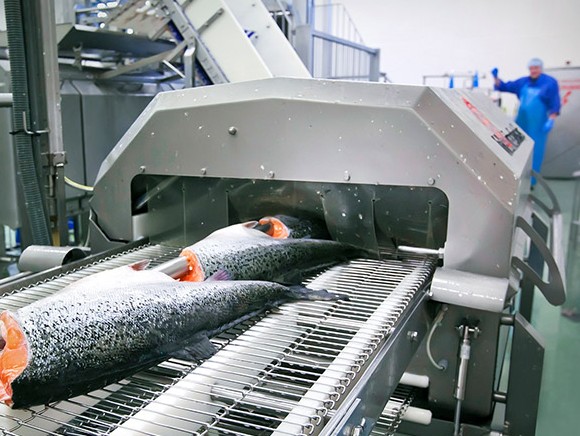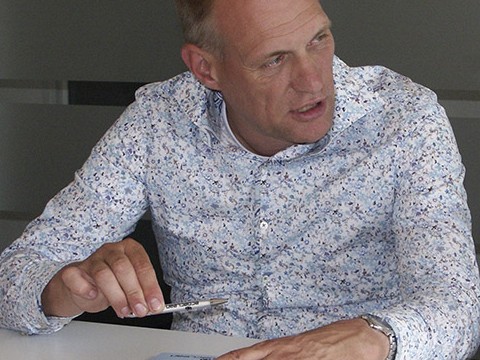
Businesses can save a lot on cleaning costs. “There are often significant possible optimisation actions that can be taken without increasing risks,” says Gert Visscher, director and owner of Eco2Clean. What must businesses do to achieve that level?
If businesses establish the structure and conditions for cleaning well, monitor them, adjust them promptly and optimise them, the food safety risks are manageable. “When a business organises and executes its cleaning procedure well, it determines its own course and gives itself the tools to navigate that course,” says Gert Visscher. With 33 years of experience in the sector, he knows what he is talking about. “If it is good, production, quality services and cleaning services will engage in a dialogue with each other instead of entering into discussions. This generates peace of mind and a clear view of things. There’s no “putting out fires”, everyone is prepared for audits, regardless of whether they are announced. Finding a good balance between risks and costs is the next step then.”
“Hygiene and cleaning are often low on the priority list,” Gert continues. “Cleaning procedures often arise of routine or habit, or as the result of incidents. They do not get much attention in practice. However, carefully thinking over whether the execution and frequency of cleaning activity is actually necessary, improves food safety and saves on cleaning costs. In well-thought-out risk management, the food safety risks are reduced because the right measures are being taken at the appropriate times. Activities that pose no immediate risk to food safety must be critically observed. There are often significant possible optimisation actions that can be taken without increasing risks.”
Every business deals with a unique product under unique circumstances. Based on historical, preferably scientific data, the quality service can analyse which incidents have occurred in the past with regard to the product and which micro-organisms caused them. At institutions such as Wageningen UR and TNO, all food safety incidents are recorded. Businesses can request information from them regarding safety risks that have occurred involving a similar product under similar conditions. “As a business, you then have to check for these food safety risks that have been proven in practice. This allows you to find them in your own business and to take the proper measures to prevent them or at least, control them.
What should businesses do? Gert: “They have to precisely map out and monitor all the relevant risky pathogens for their products. The total microbe count, which says something about the degree of cleanliness, is an important indicator. We see businesses that regularly base cleaning on controlling the total microbe count, but the product itself naturally has a high microbe count. In that case, checking the total microbe count is less relevant. Regularly checking for specific illness or spoilage causing micro-organisms such as salmonella, listeria, or E. coli has more benefits in these situations. Ultimately, residue and allergen analyses have to exclude other risks.”
______________
 In 2010, Eco2Clean put the HIMS (Hygiene Information Management) System on the market and has continued to develop it. HIMS allows you to manage by costs and cleaning quality. HIMS is now available for mobile devices as well (mobile/tablet). It contains the daily, weekly and periodic cleaning activities and makes it possible to register discoveries on the shop floor. In this way, it is even simpler to report practical cleaning problems and to record discoveries during cleaning inspection for production. All parties involved will be directly informed of cleaning deviations. This allows for faster follow-up.
In 2010, Eco2Clean put the HIMS (Hygiene Information Management) System on the market and has continued to develop it. HIMS allows you to manage by costs and cleaning quality. HIMS is now available for mobile devices as well (mobile/tablet). It contains the daily, weekly and periodic cleaning activities and makes it possible to register discoveries on the shop floor. In this way, it is even simpler to report practical cleaning problems and to record discoveries during cleaning inspection for production. All parties involved will be directly informed of cleaning deviations. This allows for faster follow-up.
______________
In order to control food safety risks, it is essential that procedures and methods be established that thoroughly follow risks which have previously been analysed. The conditions under which cleaning takes place largely determine the final quality that is achieved. “That sounds logical, but in practice, many businesses do not even have the most basic conditions properly in place,” says Gert. “Too little hot water is available, the water pressure regularly gets too low, there are insufficient tools at hand or poorly functioning equipment. This makes it impossible to obtain a good cleaning result, so forget about cleaning efficiently. And I haven’t even mentioned the degree of expertise of the cleaning staff or having a sufficient amount of time. Periodic, in-depth visual checks and reporting dirty locations that technical staff encounters during maintenance work also limit potential risks.

Once all the requirements have been established and put in place, the measurement begins: does the result satisfy the expectations that have been set? “A good registration system, preferably with extensive analysis systems and a fast, clear communication structure, is a must. Determine what the issues are and communicate these to all parties involved. Resolve them as soon as possible. Discuss the frequent analyses with each other and make arrangements about the improvements to be implemented. The proper platform for this is a periodic cleaning consultation with the parties responsible in production, cleaning, quality services and technical services that report to business management.
Photo: Gert Visscher
Source: © Eco2clean